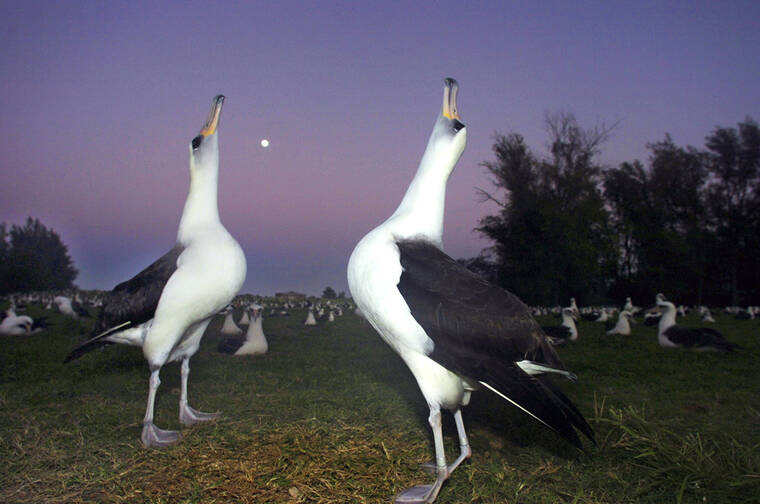PORTLAND, Maine — The warming of the planet is taking a deadly toll on seabirds that are suffering population declines from starvation, inability to reproduce, heat waves and extreme weather.
Climate-related losses have hit albatrosses off the Hawaiian islands, northern gannets near the British Isles and puffins off the Maine coast. Some birds are less able to build nests and raise young as sea levels rise, while others are unable to find fish to eat as the ocean heats up, researchers have found.
Common murres and Cassin’s auklets that live off the West Coast have also died in large numbers from conditions scientists directly tied to global warming.
With less food, rising seas that encroach on islands where birds roost and increasingly frequent hurricanes that wipe away nests, many seabirds have been producing fewer chicks, researchers say.
And tern species that live off New England have died during increasing rain and hailstorms scientists link to climate change. Some species, including endangered roseate terns, also can’t fledge chicks because more frequent severe weather kills their young, said Linda Welch, a biologist with the U.S. Fish and Wildlife Service.
The warming world is increasingly inhospitable to many seabirds, Welch said. “In the last couple years, they’ve experienced widespread nesting failure,” she said. “I definitely think there’s large ramifications of what we’re seeing.”
It’s difficult to precisely determine the population loss to wide-ranging seabirds and how much is attributable to climate change. But one estimate by researchers from University of British Columbia stated that seabird populations have fallen 70% since the mid-20th century.
Reproductive success also decreased over the last half century for fish-eating seabirds, espe
cially those that live north of the equator, according to a study earlier this year in the journal Science.
Researchers from the University of Washington and other institutions who studied dozens of worldwide seabird species found some were having success breeding at only 10% of historical levels. They also found that in the southern hemisphere, difficulty finding fish has prevented species such as the Magellanic penguin from successfully feeding chicks.
Worldwide, seabirds are in jeopardy largely because of warming ocean temperatures, scientists say. Over the past five decades, more than 90% of the extra heat on the planet from global warming has been absorbed by the ocean, according to U.S. government scientists.
Warming seas, coupled with die-off events that kill thousands of birds by starvation, are making it harder for some species to maintain stable populations, said P. Dee Boersma, a University of Washington biology professor and an author of the Science study.
The seabirds, such as penguins that have declined by nearly three-quarters in South Africa since 1991, are a harbinger of what will happen to wildlife with global warming, Boersma said.
“These ecosystem sentinels are important because they’re not only enjoyable for us to be able to see them, but they’re important as a signal that we’ve gone too far,” she said.
One of the most serious threats to seabirds is a reduction of plankton and small fish in cold northern waters. Forage fish and plankton loss has led to mass die-offs of birds such as the Cassin’s auklets that washed up by the tens of thousands on the Pacific Coast in recent years.
One of the most visible examples of global warming’s seabird toll was the die-off of tens of thousands of common murres along the West Coast in the mid-2010s. Nearly 8,000 dead birds washed up on a single beach near Chugach National Forest in Alaska.
Scientists later determined that warming waters deprived the birds of the abundant sardines and anchovies they gorge on, and the birds starved. The deaths came amid a marine heat wave known as “the blob.”
Thousands of miles away in the North Sea, a similar problem has forced northern gannets to search farther away for food, leaving chicks unattended and vulnerable to predators, University of Leeds researchers have found.
Rising sea levels are another concern. Albatross colonies in the central Pacific and Hawaiian islands depend on low-lying areas that face inundation and bigger storms, said Don Lyons, director of conservation science at Audubon Society’s Seabird Institute.
“People are really concerned about a couple decades out,” Lyons said.






